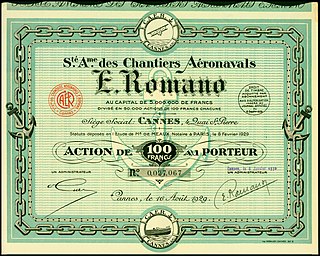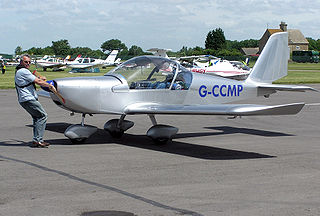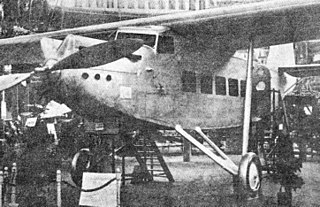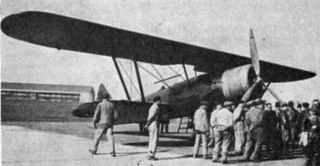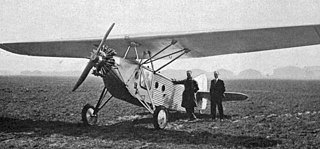| Romano R.5 | |
|---|---|
| Role | Reconnaissance flying boat |
| National origin | France |
| Manufacturer | Chantiers aéronavals Étienne Romano |
| First flight | September 1932 |
| Number built | 1 |
The Romano R.5 was a French reconnaissance flying boat built in 1932. It had a parasol wing, a single engine and hull stabilizing sponsons. Only one was built.

France, officially the French Republic, is a country whose territory consists of metropolitan France in Western Europe and several overseas regions and territories. The metropolitan area of France extends from the Mediterranean Sea to the English Channel and the North Sea, and from the Rhine to the Atlantic Ocean. It is bordered by Belgium, Luxembourg and Germany to the northeast, Switzerland and Italy to the east, and Andorra and Spain to the south. The overseas territories include French Guiana in South America and several islands in the Atlantic, Pacific and Indian oceans. The country's 18 integral regions span a combined area of 643,801 square kilometres (248,573 sq mi) and a total population of 67.3 million. France, a sovereign state, is a unitary semi-presidential republic with its capital in Paris, the country's largest city and main cultural and commercial centre. Other major urban areas include Lyon, Marseille, Toulouse, Bordeaux, Lille and Nice.

A reconnaissance aircraft is a military surveillance aircraft designed or adapted to perform aerial reconnaissance. Their roles include collection of imagery intelligence, signals intelligence, and measurement and signature intelligence. In addition to general intelligence gathering, modern technology has also enabled some aircraft and UAVs to carry out real-time surveillance.
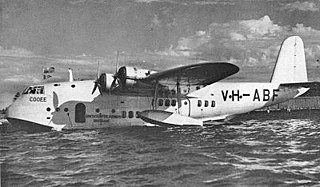
A flying boat is a fixed-winged seaplane with a hull, allowing it to land on water, that usually has no type of landing gear to allow operation on land. It differs from a floatplane as it uses a purpose-designed fuselage which can float, granting the aircraft buoyancy. Flying boats may be stabilized by under-wing floats or by wing-like projections from the fuselage. Flying boats were some of the largest aircraft of the first half of the 20th century, exceeded in size only by bombers developed during World War II. Their advantage lay in using water instead of expensive land-based runways, making them the basis for international airlines in the interwar period. They were also commonly used for maritime patrol and air-sea rescue.
